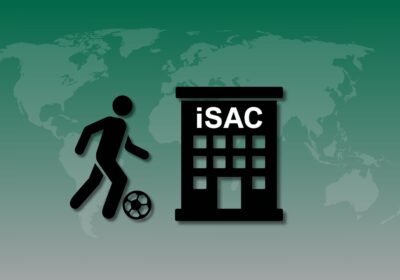A unique cooperation on the waters of Tampa Bay

USF sailing takes to the waters of Tampa Bay for practice May 9. The Bulls' practices tend to feature intraconference opponents in an effort to make everyone better. ORACLE PHOTO/BRIAN HATTAB
ST. PETERSBURG — A relatively small building a couple of hundred feet from the waters of Tampa Bay at USF St. Pete houses perhaps one of the most intriguing setups in collegiate athletics.
The setup is that of USF sailing.
That building, the Haney Landing Sailing Center, is quite the drive from the Lee Roy Selmon Athletic Center at USF Tampa. But make no mistake — unlike a lot of its peers, USF women’s sailing is a full-fledged USF Athletics team — and it’s led to some pretty great results.
Next week, the Bulls head to Newport, Rhode Island, for the Women’s Nationals Semifinals. USF has reached the national finals six of the last seven years and a large part of the success belongs to the staff back on Fowler Avenue as much as it does coach Allison Jolly.
“You know what really has been behind that is the support of Athletics,” Jolly said. “I’ve lost recruits to the University of Florida, the University of Miami, to Eckerd [College], to Jacksonville — and none of them get that varsity-level of support that we get.”
But it’s not just the varsity-level women’s sailing team at the Sailing Center. USF St. Pete’s coed sailing team also operates alongside the women’s team, although unlike the women’s team, the coed side is run through USFSP’s campus rec department.
But, despite the different method of funding, that side of USF sailing is just as serious about the sport as the varsity side.
“Our designation is a club team, yes, but we function as most college athletes would,” junior Christian Koules said. “We hold workouts Tuesday and Thursday mornings and practice Tuesday, Wednesday and Thursday. And then we’re traveling just as much as the women’s team during the fall and spring season.”
While the cooperation between the two is unusual as far as college athletics goes — rarely will you see a club and varsity baseball team sharing facilities, for example — it’s not that unheard of in sailing, according to Jolly. Hawaii used to operate under the same model — its women’s team was varsity and its coed team, which is now funded by the athletic department, was run through student government.
The cooperation also benefits both teams.
“Specifically because due to the sensitivity of the boats in terms of weight and balance, most guys … need to have females — smaller people — so our women’s team is the obvious supply,” Jolly said. “And it’s great because they get more experience and the coed team gets crews. So it’s kind of a win-win situation.”
The uniqueness doesn’t stop there, though.
When USF sailing hits the waters of Tampa Bay for practice, the sailors that head out from Bayboro Harbor can come from all over the place — any of the three USF campuses in the case of Jolly’s side, USFSP in the case of coed coach Alan Capellin’s side — and even outside the USF system entirely.
On one particular day in early May, a few sailors from Jacksonville University, a fellow member of the South Atlantic Intercollegiate Sailing Association (SAISA), joined USF — which, for the purposes of SAISA, is one team that may compete in women’s or coed events — on the bay.
An appearance like Jacksonville’s is not unusual at all either. Earlier the same week, Eckerd College also joined USF for practice.
“This is one of the sports where it’s really, really helpful to work with others,” senior Delaney Brown said, “because you sail against your teammates so often — you start to learn each other’s tricks. You throw someone new in the mix, it totally restarts your brain.”
The cooperation between what would ordinarily be intrastate and intraconference rivals stems from a desire for SAISA to perform better on the national level in hopes of outperforming the more established sailing conferences in the Northeast and Mid-Atlantic regions.
“Since we’re the youngest district in our governing body [Intercollegiate Sailing Association (ICSA)], we’ve got to work a little bit harder to make sure that we’re ready to compete at a higher caliber,” Brown said. “It’s through having practices with our competitors that we’re able to, as an entire district, get stronger and represent all of SAISA well in ICSA.”
So, despite the unique friendliness between should-be rivals, there is still an obvious level of competition when it comes to USF sailing. It’s just that unlike other USF teams, who might strive to beat UCF and other AAC foes on a daily basis, the focus of sailing is on the national level.
“The best thing we can do is work with each other to help both of our programs get stronger,” Jolly said. “We think it’s key to work together with the other teams in our conference so that we all get better. It’s a great philosophy.”
And it’s hard to argue against that philosophy because in Jolly’s 15 years at USF, the Bulls have only failed to qualify for nationals once.
“It’s a pretty incredible run of qualifying,” Jolly said. “Some of the results — we’ve been last at Nationals. But that’s 18th in the country. Nothing wrong with that.”
National Semifinals are May 21 for the women’s team and May 28 for the coed team. Results will be posted on collegesailing.org.







